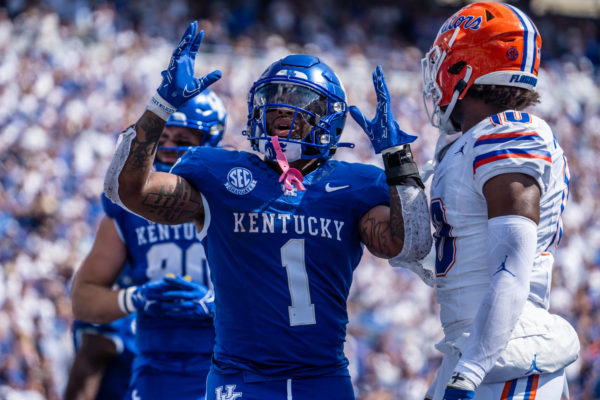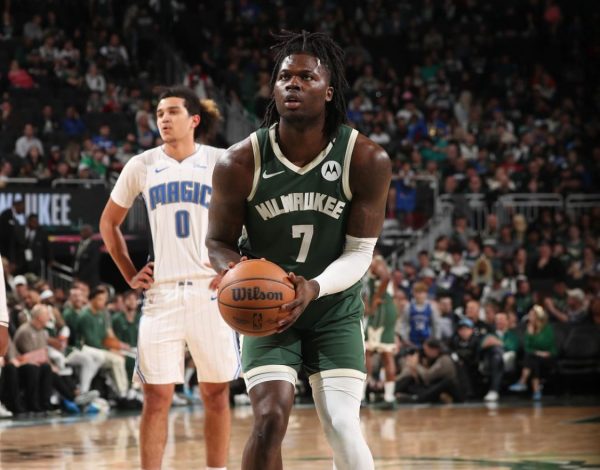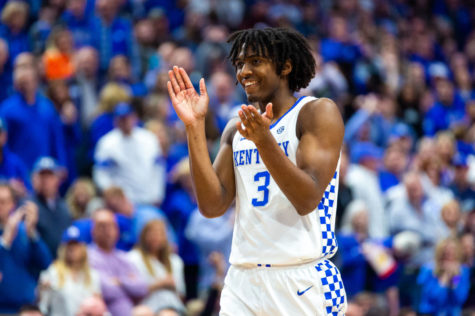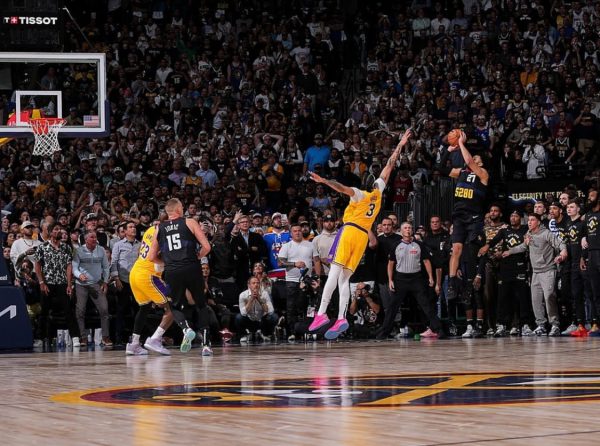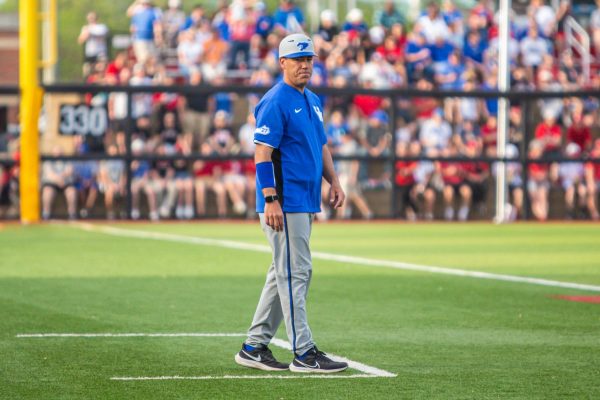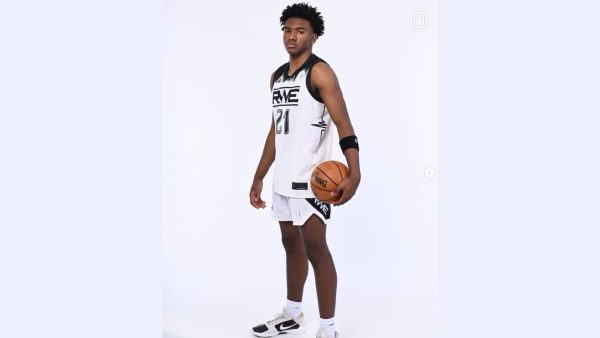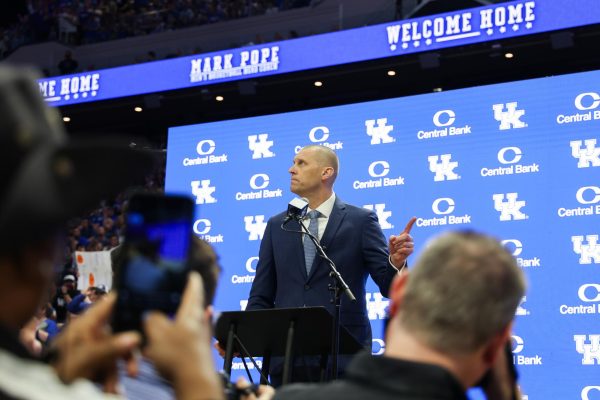Football telecast not worth the cost
September 6, 2007
Column by Chris DeLottell
Some things are worth paying $30 to watch on pay-per-view. I’d pay $30 to watch a championship boxing match, or a mixed martial-arts extravaganza, or maybe even WWE Royal Rumble.
I’d pay $30 for some other things on pay-per-view as well, but since my mom reads my column, I’ll refrain from listing them. The point is, some pay-per-view programs are worth the cost and can be of value to the viewer.
The UK-Kent State football game is not one of them.
But if you live in this state and don’t have a ticket to Saturday’s game, you’ll have to fork out $30 for the privilege of watching it live in your living room. That’s a bigger waste of money than spending $1,500 to put cameras in the Johnson Center so students can check if their favorite machine is being used.
Or, as the woman with bright red hair says in the Wendy’s commercial, “The world has gone mad.â€
If the goal here is to prohibit low- and middle-income Kentucky families from watching live broadcasts of the most talented UK football team in decades, it’s being accomplished. The game will be available for free on tape delay, and fans can always tune in to the radio, but $30 to watch the game live? There must be a better way.
It’s hard to blame UK Athletics, which, due to Southeastern Conference broadcast regulations, has little choice but to place the game on pay-per-view. Pay-to-watch is common for similar games at other SEC schools.
But the SEC isn’t alone in this shift to pay-to-watch sports. Last week marked the launch of the Big Ten Network, and that conference continues to haggle with cable providers in an attempt to extort money from every cable subscriber in the country.
Much of Big Ten Country in the nation’s Midwest (including the majority of Ohio) does not get the Big Ten Network, which means Ohio State fans in the Buckeye State will be unable to watch as many as four Buckeyes games this season.
That news should make those of us in the Bluegrass thankful that the SEC isn’t thinking of starting its own network — except that the SEC is thinking of starting its own network. If the conference gets its way, games currently broadcast by Lincoln Financial on free network television could be made available only to those willing to pay extra money to watch them. That’s a scary thought.
Like it or not, television has made the sports industry what it is today. To be more precise, network television has made the sports industry what it is today. Look through history — profit margins increased exponentially and salaries shot up soon after sports became commonplace on mainstream TV. Sports that aren’t commonplace on mainstream TV have died a slow death. When’s the last time you watched a horse race outside the Triple Crown or a boxing match?
I’m sure economists smarter than me have determined that the shift of free televised sporting events to specialized channels on digital tiers will make college conferences and professional leagues even more millions of dollars. But at what cost?
Are those extra millions worth it if basic sporting events become unavailable (and unaffordable) for the average citizen?
And if money can be made from extorting $30 for UK-Kent State in football, what about basketball? What happens if the SEC starts broadcasting UK basketball games on its specialized network? And how would fans respond to that?
I can’t answer that question, but I’ll bet there would be a Royal Rumble well worth my $30.
Sports editor Chris DeLotell is a education senior. His column appears on Tuesday and Thursday. E-mail [email protected].













































































































































